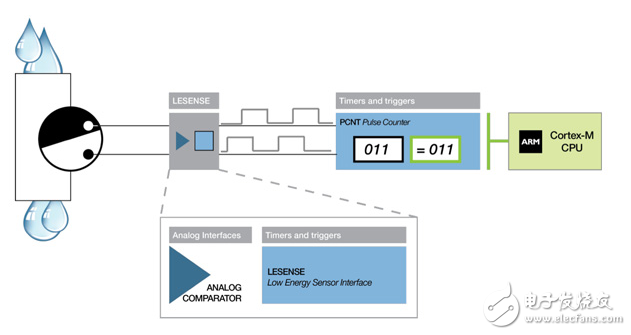
资料下载

单片机在工业自动化
单片机在工业自动化
本文着眼于Microcontrollers的角色(MCU)在工业自动化领域,专门研究如何提供现实世界的接口,传感器和执行器。它讨论了集成高性能ARM内核像®皮层™-需要M3的精度和专用外设如模拟设备和emf32 ADUCM360家人发现。它还探讨一个相对较新的协议,目标应用领域,随着低端MCU包括英飞凌XC800系列和xc16x家庭和德克萨斯乐器的MSP430F2274具体的参考,以及在专用收发器包括美心max14821。
微控制器集成了越来越高的混合信号能力和处理能力,但其他的发展正在扩展低端微控制器的生命周期。
根据定义,微控制器(MCU)是多余的没有接口的“真实世界”。它们被设计成作为输入和输出的中心,执行条件响应和管理顺序和并行进程。它们的角色是由控件定义的,而它们的可编程性意味着控制是由逻辑来管理的。然而,它们基本上被设计成与模拟世界的接口,因此严重依赖于模拟/数字转换。通常,它是模拟参数的数字表示——通常来自某种传感器——驱动控制过程,而这在自动化应用中并不明显。控制大型和复杂的使用一个小的和相对便宜的硅片的机械系统,促进了单片机在工业自动化领域的极端重要的位置,并不令人惊讶的能力,促使许多厂商与单片机的家庭这个空间目标。

Precise performance
Commercial pressures mean that the data conversion process that is key to their operation must be cost-effectively handled on-chip, giving rise to an increased level of mixed signal integration. Moreover, as the level of integration increases, so too does the processing burden placed on the core.
Their low cost and flexibility means MCUs are often used liberally, but manufacturers in all sectors are now striving to consolidate functions, for either cost, complexity or safety reasons; where once there may have been tens of MCUs, there may now be only one.
It is not surprising, therefore, that what started out as simple 4-bit devices have evolved into highly sophisticated 32-bit processing engines, with the ARM Cortex-M family becoming the core of choice among many vendors.
声明:本文内容及配图由入驻作者撰写或者入驻合作网站授权转载。文章观点仅代表作者本人,不代表电子发烧友网立场。文章及其配图仅供工程师学习之用,如有内容侵权或者其他违规问题,请联系本站处理。 举报投诉
- 相关下载
- 相关文章








